The body mass index (BMI) was measured in 1200 randomly selected adults, with the results shown in the table. BMI under 18.5 18.5 - 25 over 25 Men 36 165 315 Women 75 274 335 a. Give a point estimate for the proportion of all men whose BMI is over 25. b. Assuming the sample is sufficiently large, construct a 99% confidence interval for the proportion of all men whose BMI is over 25. c. Give a point estimate for the proportion of all adults, regardless of gender, whose BMI is over 25. d. Assuming the sample is sufficiently large, construct a 99% confidence interval for the proportion of all adults, regardless of gender, whose BMI is over 25.
The body mass index (BMI) was measured in 1200 randomly selected adults, with the results shown in the table. BMI under 18.5 18.5 - 25 over 25 Men 36 165 315 Women 75 274 335 a. Give a point estimate for the proportion of all men whose BMI is over 25. b. Assuming the sample is sufficiently large, construct a 99% confidence interval for the proportion of all men whose BMI is over 25. c. Give a point estimate for the proportion of all adults, regardless of gender, whose BMI is over 25. d. Assuming the sample is sufficiently large, construct a 99% confidence interval for the proportion of all adults, regardless of gender, whose BMI is over 25.
MATLAB: An Introduction with Applications
6th Edition
ISBN:9781119256830
Author:Amos Gilat
Publisher:Amos Gilat
Chapter1: Starting With Matlab
Section: Chapter Questions
Problem 1P
Related questions
Question
The body mass index (BMI) was measured in 1200 randomly selected adults, with the results shown in the table.
| BMI | |||
| under 18.5 | 18.5 - 25 | over 25 | |
| Men | 36 | 165 | 315 |
| Women | 75 | 274 | 335 |
a. Give a point estimate for the proportion of all men whose BMI is over 25.
b. Assuming the sample is sufficiently large, construct a 99% confidence interval for the proportion of all men whose BMI is over 25.
c. Give a point estimate for the proportion of all adults, regardless of gender, whose BMI is over 25.
d. Assuming the sample is sufficiently large, construct a 99% confidence interval for the proportion of all adults, regardless of gender, whose BMI is over 25.
Expert Solution
This question has been solved!
Explore an expertly crafted, step-by-step solution for a thorough understanding of key concepts.
This is a popular solution!
Trending now
This is a popular solution!
Step by step
Solved in 2 steps with 4 images

Knowledge Booster
Learn more about
Need a deep-dive on the concept behind this application? Look no further. Learn more about this topic, statistics and related others by exploring similar questions and additional content below.Recommended textbooks for you

MATLAB: An Introduction with Applications
Statistics
ISBN:
9781119256830
Author:
Amos Gilat
Publisher:
John Wiley & Sons Inc
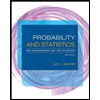
Probability and Statistics for Engineering and th…
Statistics
ISBN:
9781305251809
Author:
Jay L. Devore
Publisher:
Cengage Learning
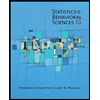
Statistics for The Behavioral Sciences (MindTap C…
Statistics
ISBN:
9781305504912
Author:
Frederick J Gravetter, Larry B. Wallnau
Publisher:
Cengage Learning

MATLAB: An Introduction with Applications
Statistics
ISBN:
9781119256830
Author:
Amos Gilat
Publisher:
John Wiley & Sons Inc

Probability and Statistics for Engineering and th…
Statistics
ISBN:
9781305251809
Author:
Jay L. Devore
Publisher:
Cengage Learning

Statistics for The Behavioral Sciences (MindTap C…
Statistics
ISBN:
9781305504912
Author:
Frederick J Gravetter, Larry B. Wallnau
Publisher:
Cengage Learning
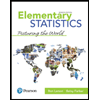
Elementary Statistics: Picturing the World (7th E…
Statistics
ISBN:
9780134683416
Author:
Ron Larson, Betsy Farber
Publisher:
PEARSON
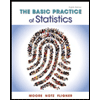
The Basic Practice of Statistics
Statistics
ISBN:
9781319042578
Author:
David S. Moore, William I. Notz, Michael A. Fligner
Publisher:
W. H. Freeman
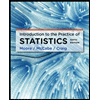
Introduction to the Practice of Statistics
Statistics
ISBN:
9781319013387
Author:
David S. Moore, George P. McCabe, Bruce A. Craig
Publisher:
W. H. Freeman